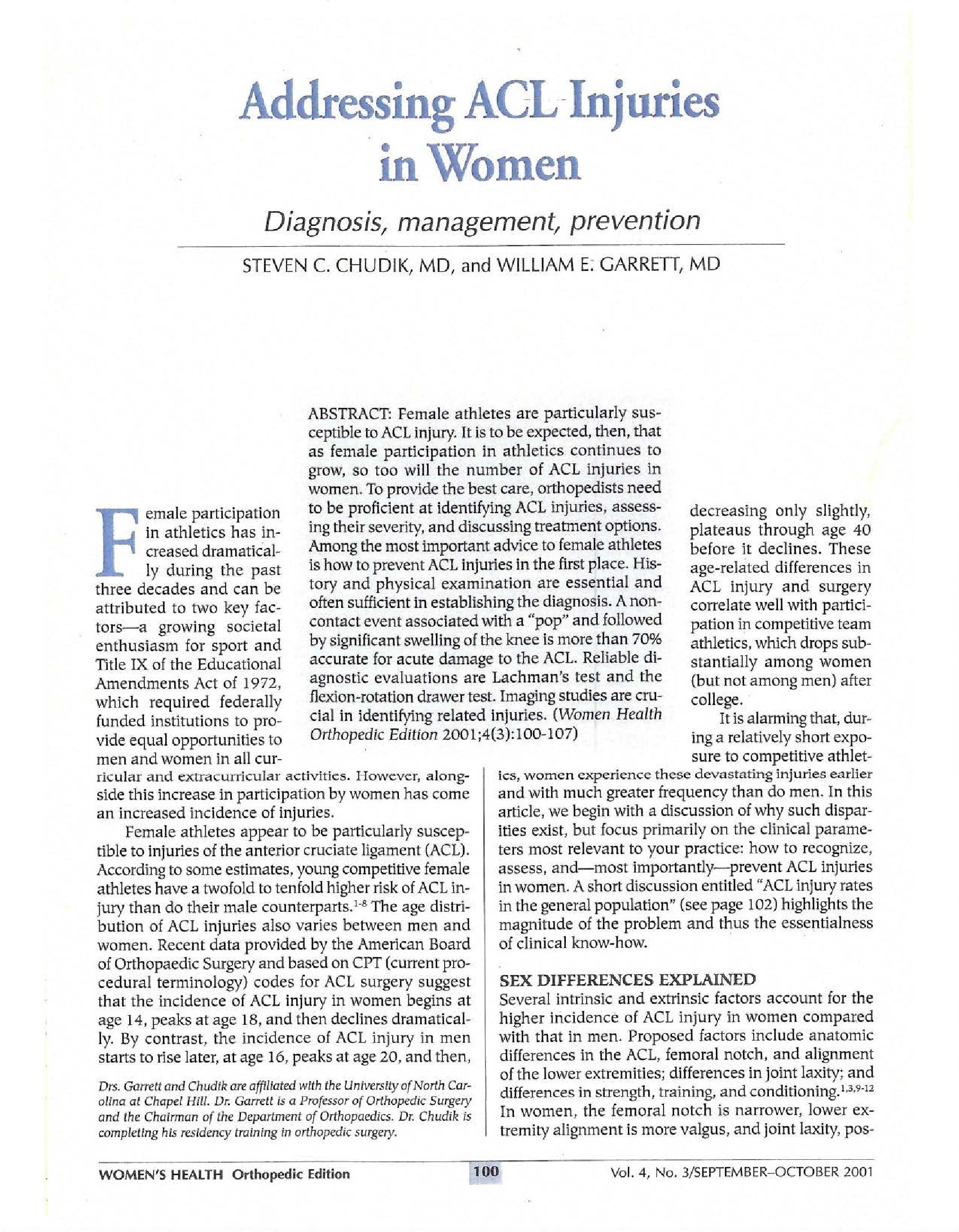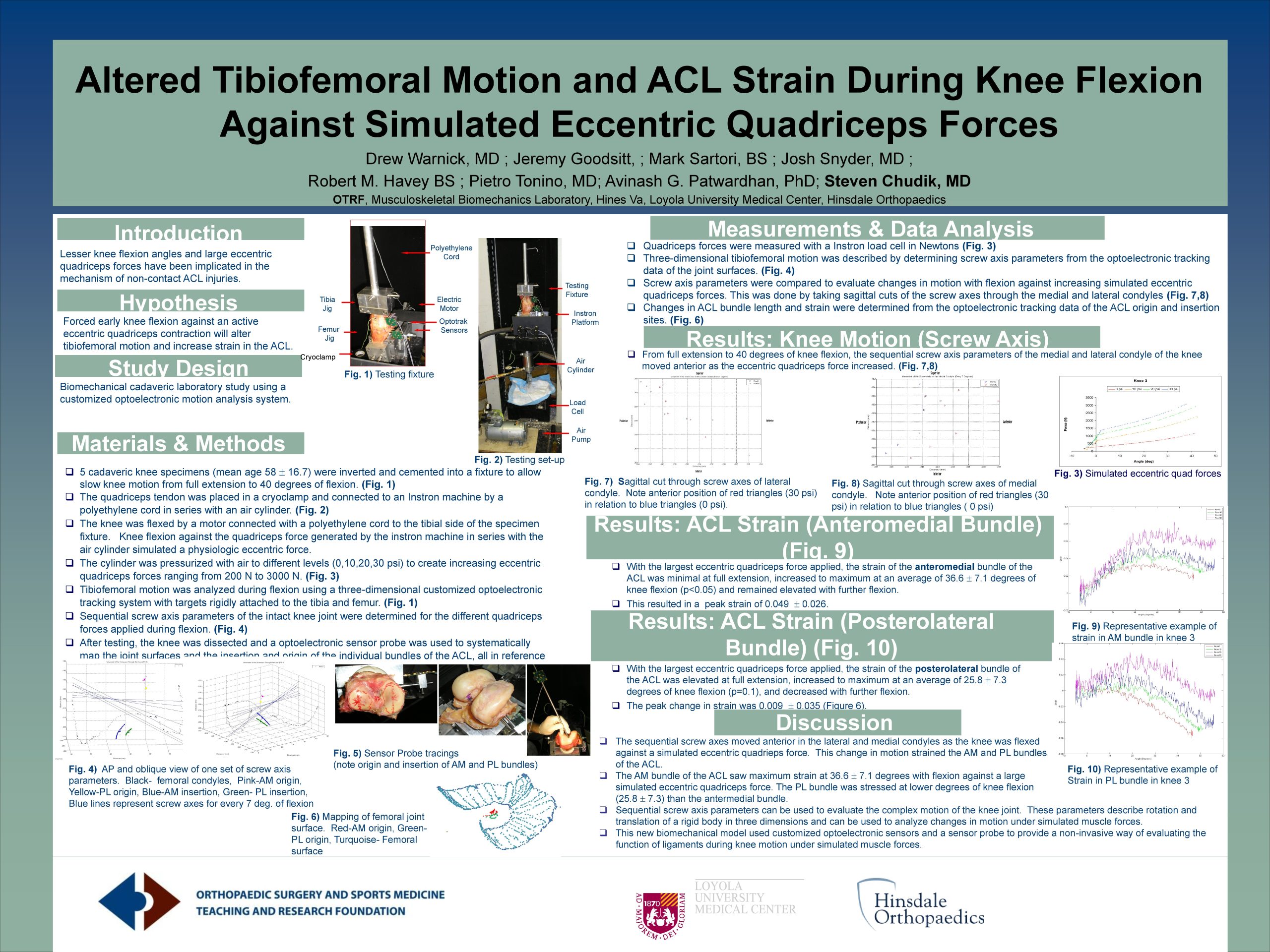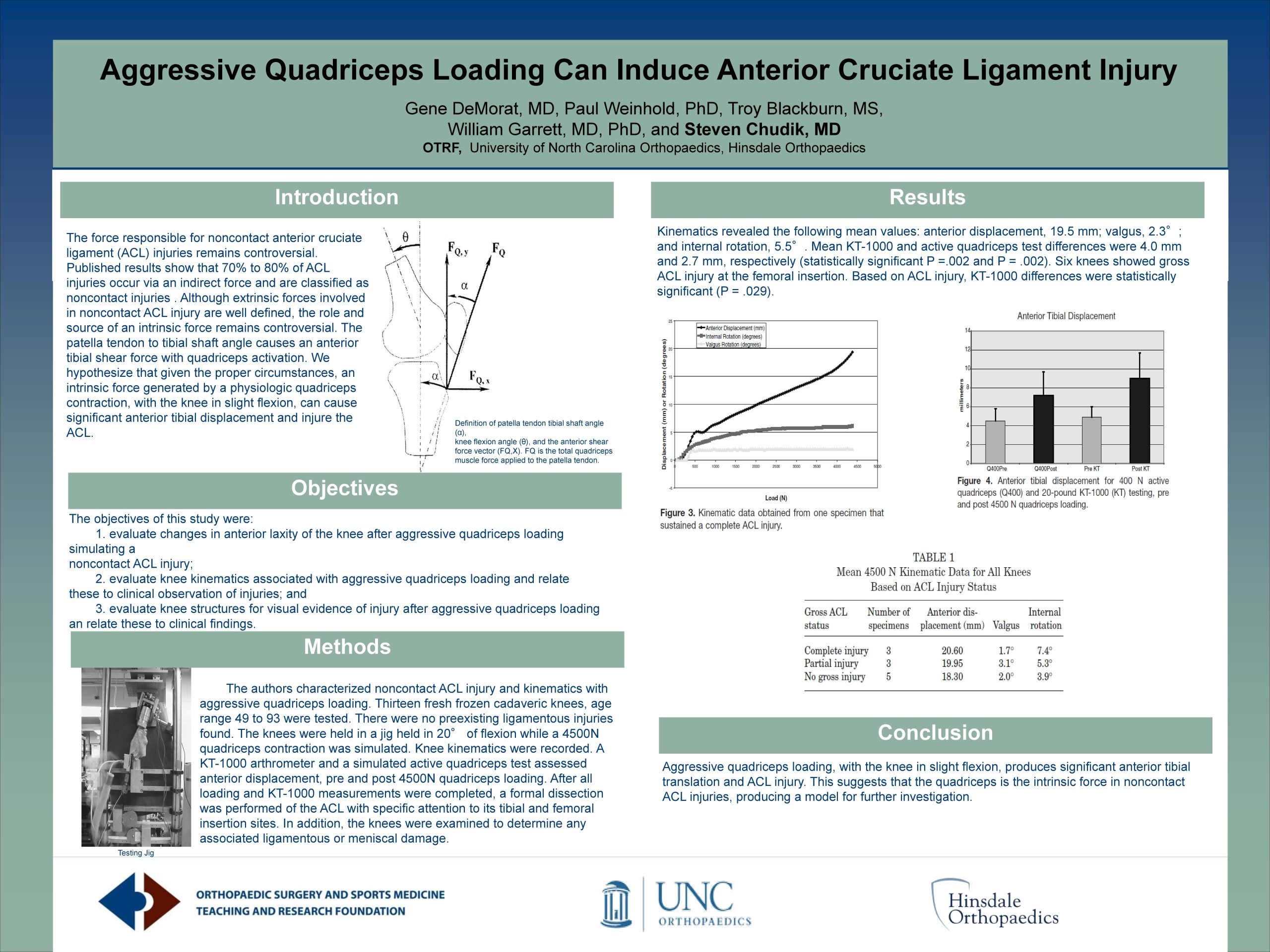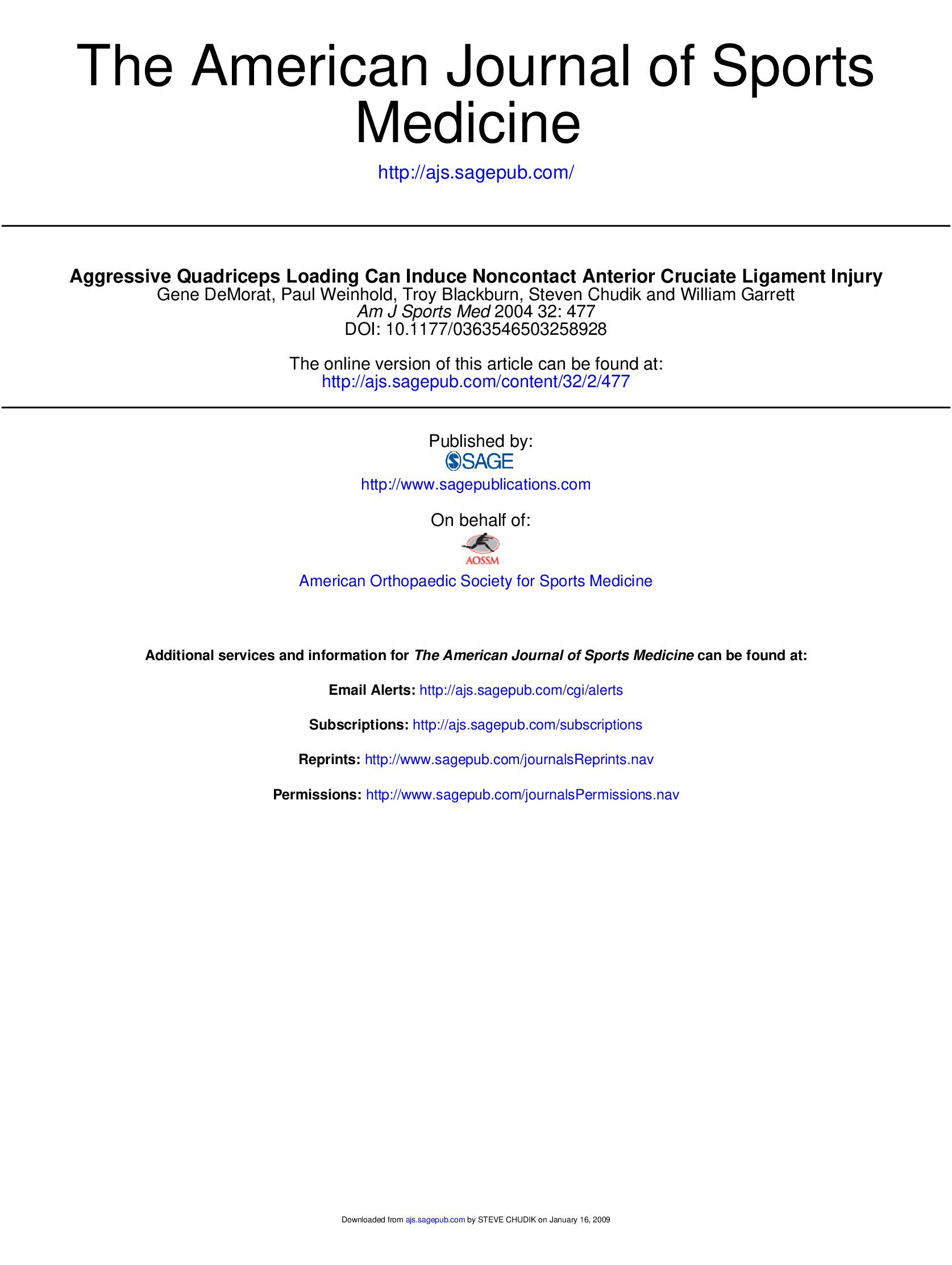 Are you ready "fore" golf?
Are you ready "fore" golf?
Lateral collateral knee ligament sprain is a sprain (tear) of one of the four major ligaments of the knee. The lateral collateral ligament (LCL) is a structure that helps keep the normal relationship of the femur (thigh bone) and the tibia (leg bone) on the outer side of the knee. It prevents the knee from buckling outward.
Learn More
Females appear to be particularly susceptible to anterior cruciate ligament (ACL) injuries. In this published report, Dr. Steven Chudik examines the need for identifying, diagnosing the severity of the injury, discussing treatment and management options to provide the best care.
Learn More
Lesser knee flexion angles and large eccentric quadriceps forces have been implicated in the mechanism of non-contact ACL injuries. We hypothesize forced early knee flexion against an active eccentric quadriceps contraction will alter tibiofemoral motion and increase strain in the ACL. With the largest eccentric quadriceps force applied, the strain of the anteromedial bundle of the ACL was minimal at full extension, increased to maximum at an average of 36.6 7.1 degrees of knee flexion (p<0.05) and remained elevated with further flexion. This resulted in a peak strain of 0.049 0.026. With the largest eccentric quadriceps force applied, the strain of the posterolateral bundle of the ACL was elevated at full extension, increased to maximum at an average of 25.8 7.3 degrees of knee flexion (p=0.1), and decreased with further flexion. The peak change in strain was 0.009 0.035.
Learn More
The force responsible for noncontact anterior cruciate ligament (ACL) injuries remains controversial. Published results show that 70 to 80 percent of ACL injuries occur via an indirect force and are classified as noncontact injuries . Although extrinsic forces involved in noncontact ACL injury are well defined, the role and source of an intrinsic force remains controversial. The patella tendon to tibial shaft angle causes an anterior tibial shear force with quadriceps activation. We hypothesize that given the proper circumstances, an intrinsic force generated by a physiologic quadriceps contraction, with the knee in slight flexion, can cause significant anterior tibial displacement and injure the ACL. Aggressive quadriceps loading, with the knee in slight flexion, produces significant anterior tibial translation and ACL injury. This suggests that the quadriceps is the intrinsic force in noncontact ACL injuries, producing a model for further investigation.
Learn More
Published in the American Journal of Sports Medicine, Vol 32, Number 2, 2004, pp 477-483
Learn More
Content provided by Dr. Chudik not to be used for diagnosis and treatment. You can receive a proper evaluation and diagnosis by making an appointment with Dr. Chudik